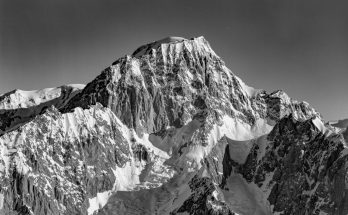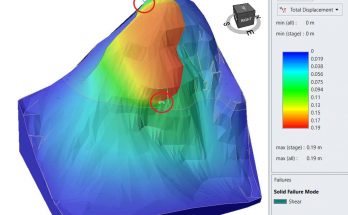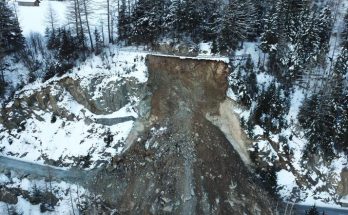Nicolas Emery
Director: Prof. Michel Jaboyedoff
Expert: Dr. Marc-Henri Derron
Supervisors: MSc. Dario Carrea, Dr. Antonio Abellan
Landslides are complex phenomena. Despite the number of studies that have been conducted on this topic, they still remain unpredictable. It is particularly difficult to predict them because of the many factors that can impact the stability of a slope. This thesis will focus mainly on two of these factors: water and the slope inclination. Its goal is then to identify their impact on the characteristics of a landslide such as its geometry, its volume, its speed and its response time. For this purpose we have created an analogue model of slope in laboratory, made with sand of a diameter smaller than 2 millimeters. The level of water injected into the model has at first been varied whilst keeping the slope inclination steady, then we changed the slope inclination whilst maintaining a stable water level. The slope surface has been scanned thanks to the scanner Konica Minolta Vivid 9i with time intervals of one minute. For each experiment, the volume has been determined based on the failure surfaces visible through the transparent glasses that form the outside borders of the model. A MATLAB code has been developed to allow their upload from pictures of failure surfaces taken sideways as well as for the calculation of the landslide volume for each experiment. The MATLAB code developed by Carrea et al. (2012) has been used to follow the trajectories of the small balls set on the slope in order to calculate their speed based on LiDAR scans. As last, an analysis of the geometry and of the calculation of response time have been realised thanks to video recordings during the experiments.
The results show a significant impact of the water height on the extent of the landslide resulting in a Iinear increase of the landslide volume as well as its speed with the water height. As regards the geometry, a variation of the water implies little difference. Indeed, it has been observed that a landslide with a low water height is comparable to a landslide with a higher water height, but that it interrupts at an early stage, which implies that the final scarp is located further down the slope. Finally, the proximity of the toe of the slope from the water input has certainly prevented the determination of the real influence of the water height over the response time.
The change in slope inclination has shown major differences regarding to the geometry as the experiments with a weak slope inclination have mainly been characterised by a viscous gravity flow, whereas when the slope inclination is high, topples phenomena and rock falls show up. It has also been demonstrated that the landslide volume increases with the slope inclination. However, for the velocity, no trend has been identified due to the high uncertainty of the results. As response time strongly depends on the distance between the toe of the slope and the water input, and as this declines with the slope inclination in our experiments, it hasn’t been possible to highlight any relationship between these two variables.



